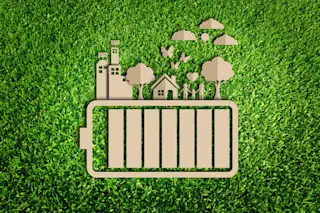The United Nations estimates that people discard 50 million tons of electronics each year. The “tsunami of e-waste,” according to the World Health Organization director-general, leaches toxic chemicals like lead and mercury, which can degrade environments and harm humans. For example, people living near e-waste facilities suffer from thyroid disfunction, cancer and miscarriage.
In the U.S. alone, people discard three billion batteries each year. The Environmental Protection Agency recommends recycling them at designated facilities because they leak toxic chemicals. But for many, it’s just simpler to throw them in the trash. In a new study, researchers invented a biodegradable, single-use battery built with non-toxic paper and ink. If it’s scalable, the battery could provide a safe disposable alternative for low-powered electronics.
The scientists embedded a one square centimeter strip of paper with salt. On one side, they printed zinc ink to create the negative end of the battery, and on ...














